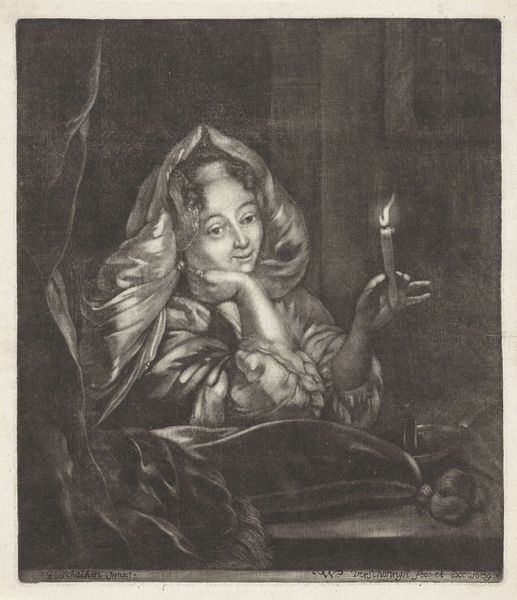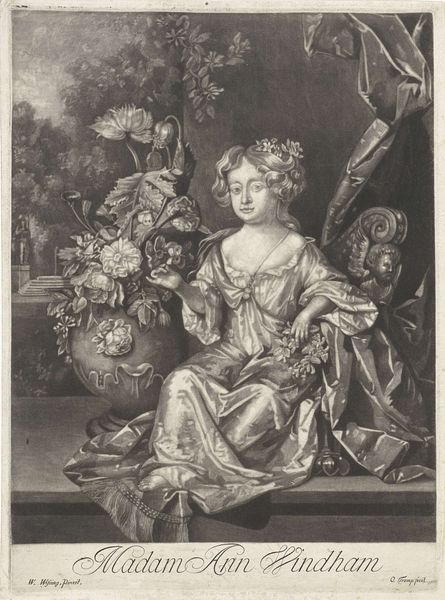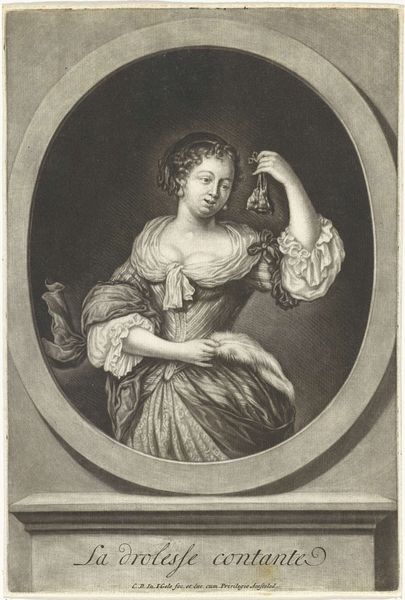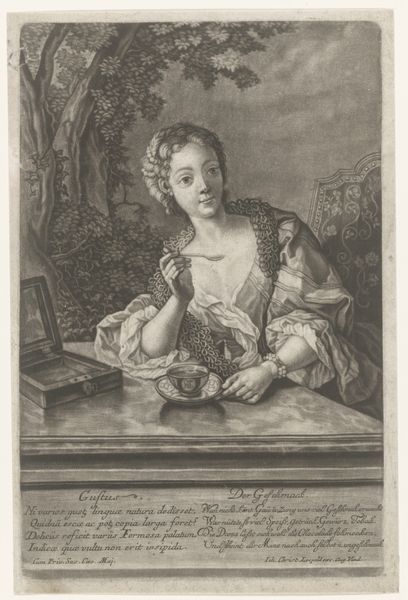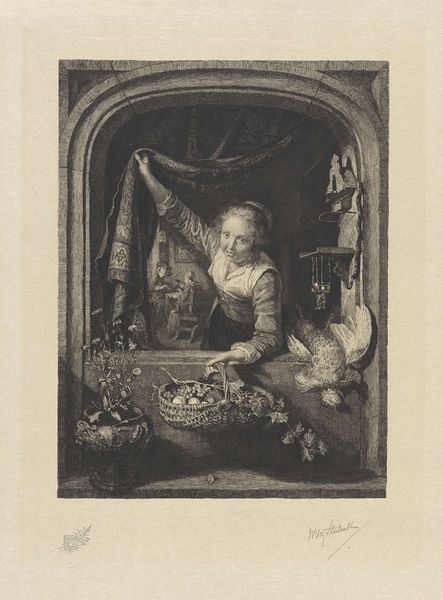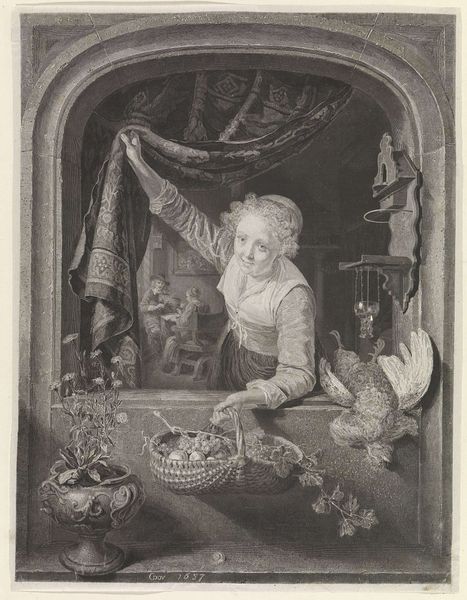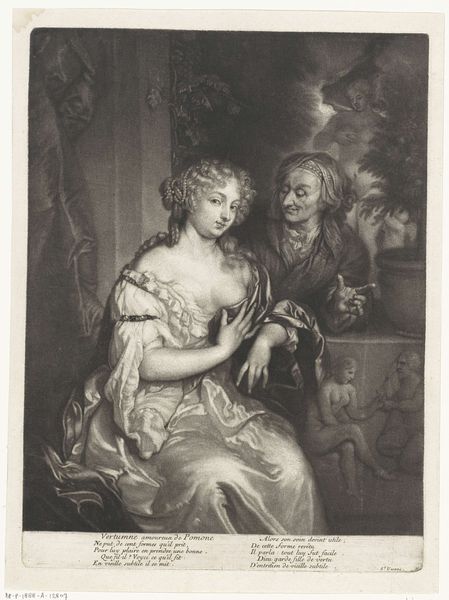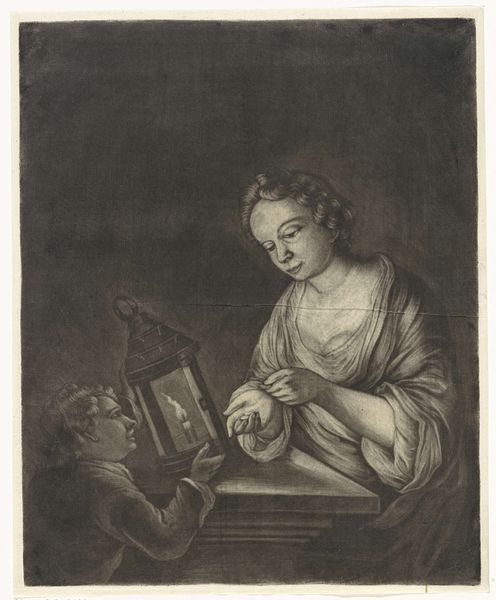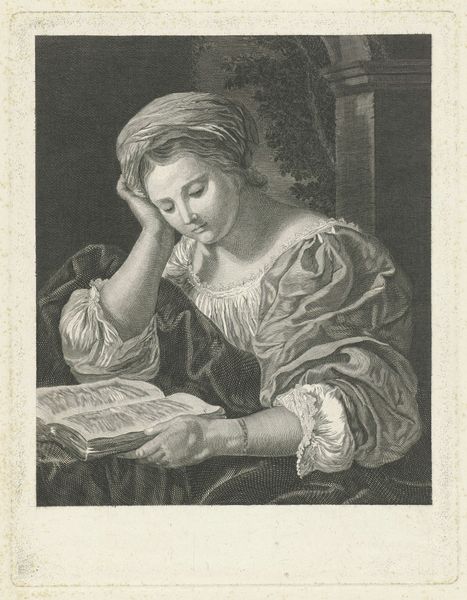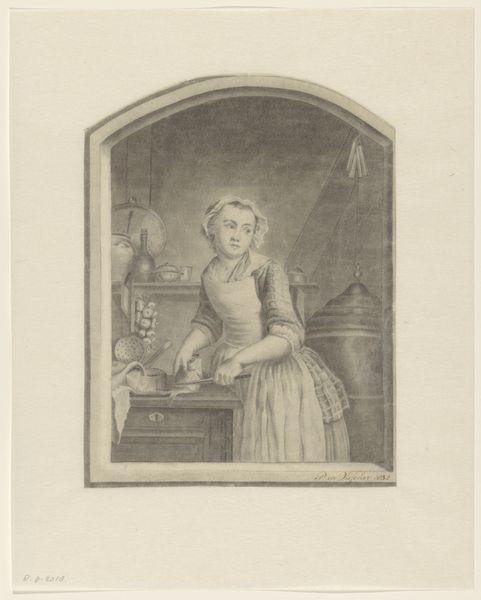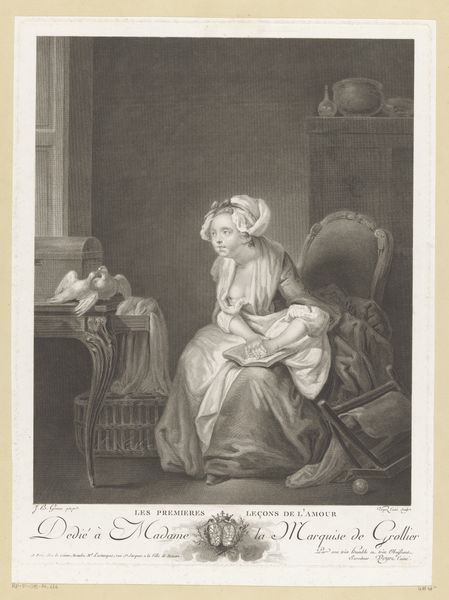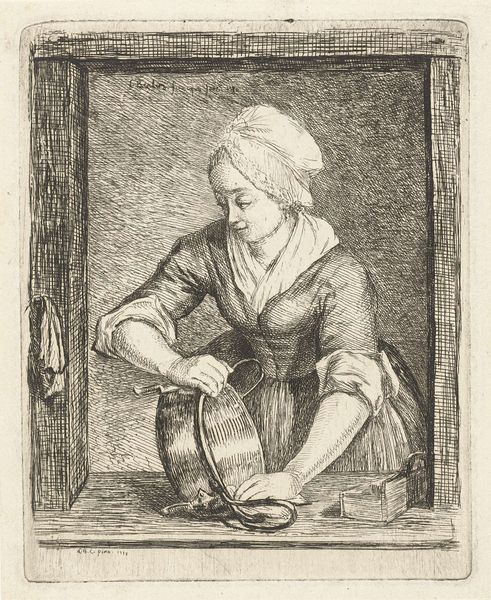
engraving
#
portrait
#
baroque
#
pencil sketch
#
charcoal drawing
#
pencil drawing
#
portrait drawing
#
genre-painting
#
engraving
Dimensions: height 171 mm, width 135 mm
Copyright: Rijks Museum: Open Domain
Curator: Here we have a work entitled "Jonge vrouw met een kruik in een venster," which translates to "Young woman with a pitcher in a window." This engraving dates from between 1740 and 1774 and is attributed to Pieter Anthony Wakkerdak. Editor: There's a subdued tranquility about it. The limited tonal range really emphasizes the textures of the skin and ceramic. And that arched window evokes such a powerful sense of containment. Curator: That containment speaks to so much, doesn't it? Consider the context of the era: Dutch genre paintings often positioned women in domestic roles. This isn't just a woman; she's Woman as defined by labor, circumscribed by her duties. The window itself acts almost as a stage, framing her existence. Editor: Absolutely, the window's frame, which highlights her placement. And speaking of her actions, the pitcher and water are recurrent symbols that tap into themes of purity, sustenance, but also social role and duty, considering the long history that iconography. Curator: Exactly! And look at the level gaze she holds. Is it weariness? Resignation? Defiance even? This engraving complicates simplistic notions of feminine virtue; she looks at us, not down. The class dynamics also interest me, because her labor seems glorified and essential in the social narrative while showing inequality through the artwork. Editor: That downward tilt of the head and the slight pursing of the lips hint at complex emotional undercurrents. I find it remarkable how effectively a relatively simple composition activates such deeply ingrained cultural and psychological connections, using universal objects to symbolize more profound themes. Curator: For me, that balance of immediate visual access and slow reveal of hidden meaning speaks directly to ongoing contemporary debates about labor and the persistent issues women encounter at their work places, showing a cyclical, social failure in power relationships. Editor: It makes you appreciate how an image like this becomes an enduring vessel for cultural memory, echoing through centuries. Curator: It's an intersection of artistic practice and historical context, where those silent windows speak volumes.
Comments
No comments
Be the first to comment and join the conversation on the ultimate creative platform.
